Syn.: Mimosa quadrivalvis var. nuttallii (DC. ex Britton et Rose) L. S. Beard ex Barneby, Leptoglottis nuttallii DC. ex Britton et Rose, Schrankia nuttallii (DC. ex Britton et Rose) Standl.
Family: Fabaceae Lindl.
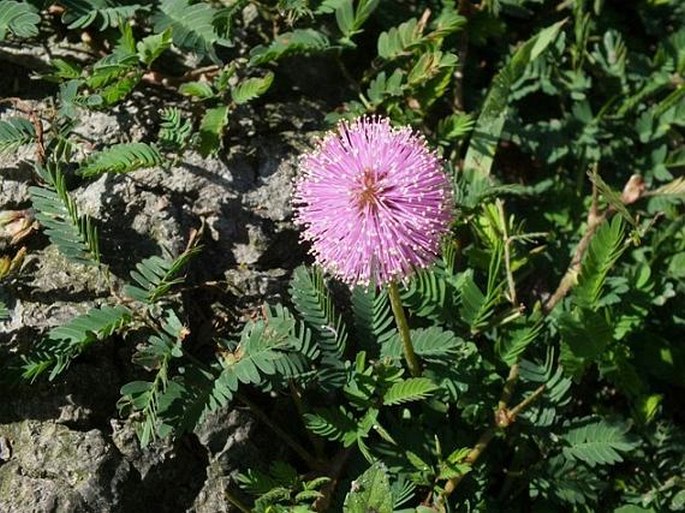
Distribution: North American plant found in the midwest to south of US, from southern part of South Dakota to New Mexico and Texas and from Missouri to Louisiana.
Ecology: Found in sandy and silty soils in grasslands, open fields, woodland margins and disturbed areas. Blooms from early May to September.
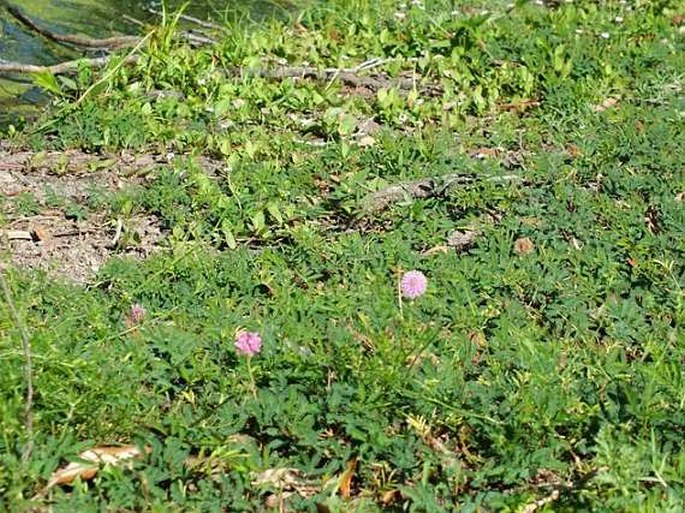
Description: Perennial semi-woody vine of trailing habit. Stem prostrate, up to 150 cm in length, green or pink, with recurved prickles. Leaves are alternate, bipinnately compound; leaflets have pulvinules at the base of petioles to facilitate the folding in case of an adversary touch (attack), up to 5–19 primary segments and 17–31 secondary leaflets. Inflorescence rising from axils of leaves is a globular cluster of flowers, 1.5–2.5 cm across, consisting of stamens with pink filaments and yellowish anthers. The corollas are small in the centre of the ball, visible only after close inspection. Buds remind of unripe raspberry or mulberry. Fruit is a legume, about 5 cm long, round in cross-section, covered in dense prickles.
Note: This plant was named in honour of Thomas Nuttall (1786–1859), an English botanist and discoverer of many species in North America, of which many carry his name.
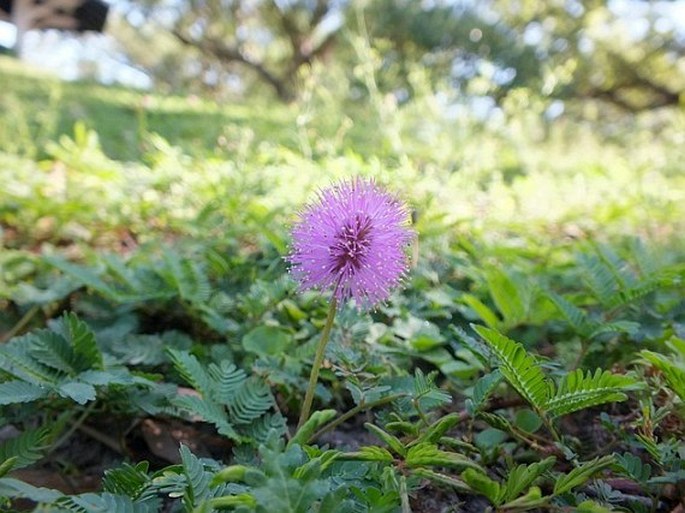
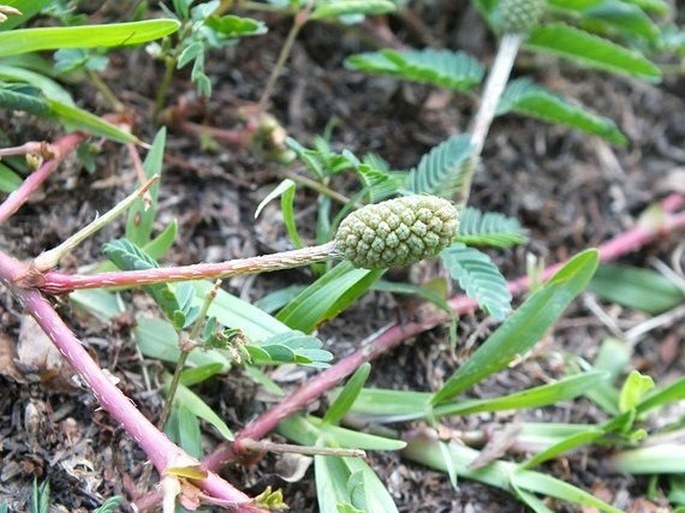
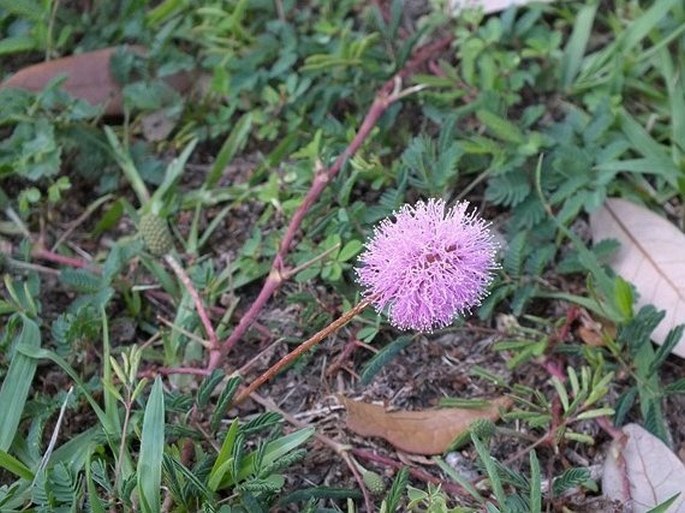
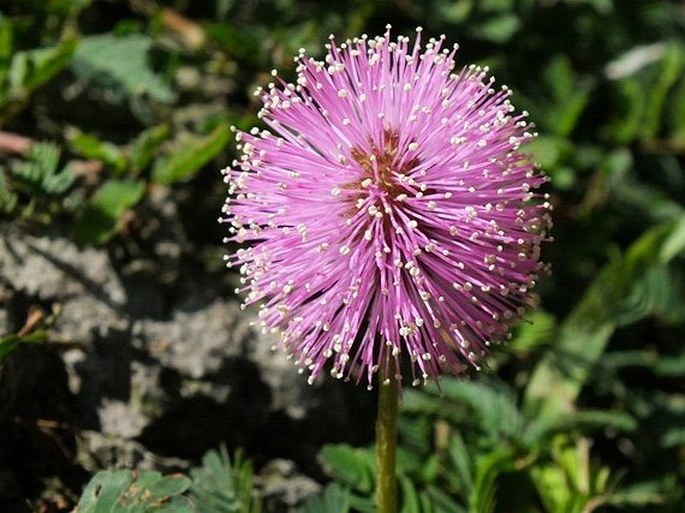
These images were taken in USA, Louisiana, New Orleans, Audubon Park (May 2014).


